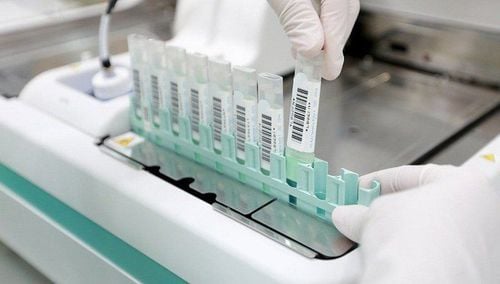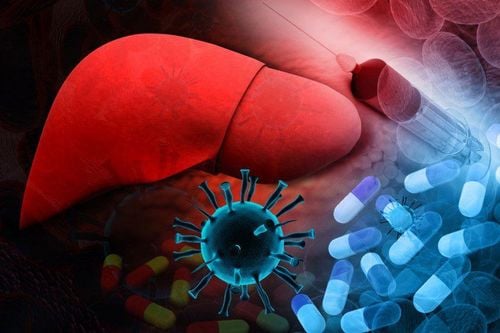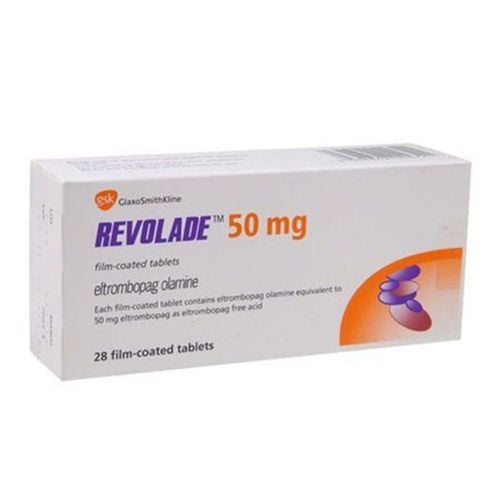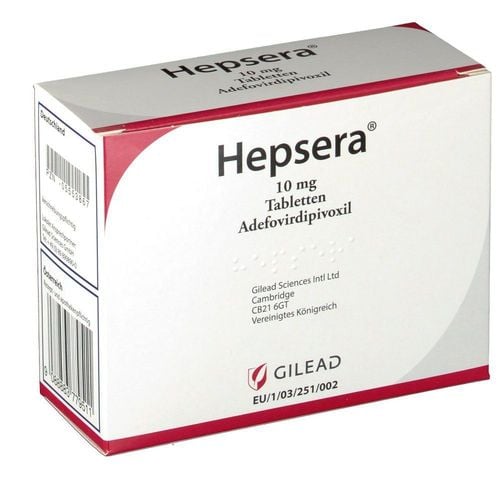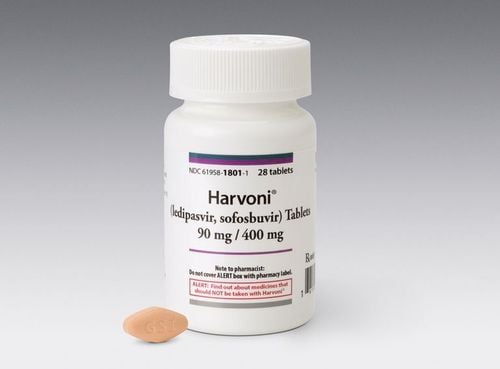This is an automatically translated article.
Hepatitis C is one of the leading causes of cirrhosis and liver cancer. Quantitative HCV RNA test helps to count the number of active hepatitis C viruses in the patient's body, thereby deciding on treatment or monitoring.
1. When should a quantitative HCV RNA test be done?
Although hepatitis C is less common than hepatitis B, it can also progress to cancer and seriously affect a person's health. The genetic material of the hepatitis C virus is RNA, so if you want to determine the concentration of hepatitis C virus in the blood, it is necessary to measure the viral RNA.
Quantitative HCV RNA test is performed by Real Time PCR method, which aims to detect and measure the viral load in the blood, this is a very sensitive method that can detect the virus when the concentration is in the blood. blood is low.
In this hepatitis C testing technique, plasma or serum samples from the patient's body are used to isolate viral RNA. The RNA was then reverse transcribed into cDNA and amplified by PCR. During each amplification cycle, the signal reader inside the PCR machine captures a fluorescence signal from the probe and is specific to the viral genetic material. The fluorescence signal is used for the purpose of calculating the HCV virus concentration in the sample.
Patients are assigned to perform quantitative HCV RNA test in some of the following cases:
When there are symptoms of acute hepatitis C such as: Fatigue, loss of appetite, mild fever, jaundice, itchy skin, confusion digestive disorders ... When exposed to risk factors and suspected hepatitis C virus infection. Indicated for evaluation and monitoring of chronic hepatitis C status. When anti-HCV test or HCV RNA qualitative test is positive.
2. Steps to conduct quantitative HCV RNA test
Step 1: Take a specimen of 2ml of venous blood. Place in the EDTA tube.
Step 2: Proceed to bring to the laboratory. The testing steps are carried out closed and automatically according to the program.
Step 3: Identify the results
If the HCV RNA quantitative test is below the detection threshold, it means the amount of virus is so small that the machine cannot measure it or there is no virus in the blood. If it shows the amount of virus, it is the amount of hepatitis C virus in the blood of the patient. If the hepatitis C test shows no virus, it means that there is absolutely no virus in the blood.
3. Meaning of HCV RNA . Quantitative Test
Quantitative HCV RNA testing is very important in the diagnosis and monitoring of hepatitis C treatment.
Once a patient is confirmed to have hepatitis C, the next step is to measure the viral load. hepatitis C in the blood by quantitative HCV RNA test:
If the viral load is above the detection threshold, this is an important sign for the treating doctor to decide to treat hepatitis C with antiviral drugs. Monitoring the results of hepatitis C treatment: Monitoring after the treatment process, see the amount of virus in the blood below the detection threshold to assess the response to treatment with the drug. Aim to monitor and stop treatment when the viral load is below the detection threshold within the allowed time. In addition, a quantitative HCV RNA test can be used to monitor patients after antiretroviral therapy has been discontinued to assess the risk of reinfection.
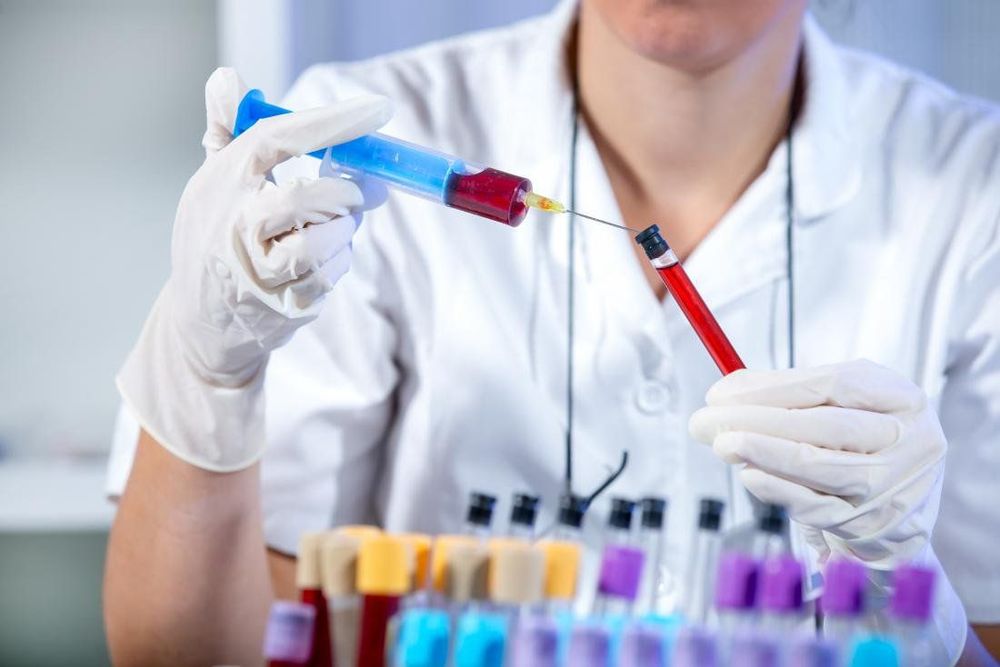
Xét nghiệm định lượng HCV RNA được thực hiện bằng phương pháp Real Time PCR
4. Some notes when evaluating HCV RNA
Notes when performing a quantitative HCV RNA test include:
The genetic material of the virus is unstable RNA, which is easily degraded, so the test should be performed soon after sampling to avoid false results. reduce the number of viruses, causing misdiagnosis or affecting the monitoring and treatment of patients. The HCV RNA quantitative hepatitis C test can be performed using whole blood, plasma or serum samples. When blood is drawn for testing, the formation of blood clots can reduce the amount of virus measured in the serum. Therefore, when doing the test, the EDTA tube should be used. Do not use tubes with anticoagulant containing Heparin because it will inhibit PCR reaction. In summary, the quantitative HCV RNA test, which measures the viral load in the blood, is very important in the diagnosis, treatment and monitoring of the treatment process, as well as the risk of hepatitis C re-infection. To ensure the most accurate results, patients should perform the test at reputable facilities. Currently, Laboratory Specialist - Vinmec International General Hospital is one of the leading prestigious addresses in the country, trusted by many patients. Thanks to the use of modern machines and equipment for testing and analysis, it has provided accurate information, helping doctors to assess the overall health of the person being tested, early detection. disease and suggest a timely treatment plan. In particular, Vinmec currently has advanced hepatobiliary screening packages that can help detect Hepatitis Virus at an early stage even when symptoms have not yet appeared.
Choose a comprehensive hepatobiliary screening package at Vinmec to help customers:
Evaluate the liver's ability to work through liver enzyme tests; Evaluation of bile function; vascular nutrition; Early screening for liver cancer; Perform tests such as Total blood cell analysis, blood clotting ability, screening for hepatitis B, C Assessment of hepatobiliary status through ultrasound images and diseases that have the potential to affect liver disease/cause liver disease. more severe liver disease In-depth analysis of parameters to evaluate hepatobiliary function through laboratory, subclinical; the risk of affecting the liver and early screening for hepatobiliary cancer.
Please dial HOTLINE for more information or register for an appointment HERE. Download MyVinmec app to make appointments faster and to manage your bookings easily.




